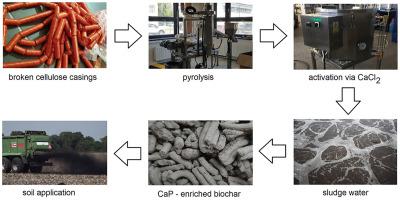Chemosphere ( IF 8.1 ) Pub Date : 2021-03-04 , DOI: 10.1016/j.chemosphere.2021.130097 Jana Stávková , Josef Maroušek

|
For several decades, researchers have been struggling to obtain minimum phosphorus (P) capture costs to meet the parameters for discharging wastewater into the watercourse. Findings from ongoing practices suggest that the Modified University of Cape Town process is currently the cheapest P capture method in the USA, whereas struvite precipitation seems to be the most cost effective method in the rest of the developed world. P sorption via biochars is becoming widespread in developing countries because this technique allows for the turning of voluminous biowaste into fertilizer with soil improving properties. Nevertheless, the reliability of this technology fluctuates throughout the year according to biowaste characteristics. For the first time, it has been proposed to use broken cellulose casings, which are readily available in increasing quantities worldwide. The sorbent obtained was subsequently activated by calcium chloride (CaCl2), whose cost is irrelevant as it would be used for agronomical purposes anyway. Pilot scale experiments show that this novel sorbent is capable of capturing 31.8 kg P t−1 from sludge water that contains 52.5 mg of extractable P L−1. More importantly, it was reported that the novel sorbent captures P, mostly in calcium phosphates (CaP) forms (191.5 g CaP t−1), which are the most valuable for plant nutrition. Enough evidence was obtained to claim that the ongoing technological race to meet the P discharge standards at the lowest cost possible should also reflect the agronomic value of P to plant nutrition to increase its competitiveness.











































 京公网安备 11010802027423号
京公网安备 11010802027423号